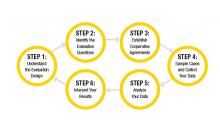Victims of sexual assault may suffer physical, emotional and psychological trauma as a result of their victimization. Providing them with sensitive health care in the aftermath of their assault is paramount.
Unfortunately, all too often, victims must wait long hours in busy emergency departments. They are not allowed to eat, drink or even go to the bathroom while they wait for a medical exam. And frequently, the physicians or nurses who perform the exams lack training and proficiency in medical evidence collection procedures.
To help improve post-assault care for victims, communities around the country have implemented Sexual Assault Nurse Examiner (SANE) programs, which offer a multidisciplinary, victim-centered response. Through these programs, specially trained nurses provide crisis intervention and emotional support, health care, injury detection and treatment, and forensic medical evidence collection in hospital emergency departments or community-based clinics. More than 600 SANE programs now exist throughout the United States and Canada.
SANE programs not only provide sensitive care and support to victims — research suggests that these programs also may have a positive impact on prosecution rates in their communities. For example, two NIJ-funded studies found that communities' prosecution rates increased significantly after the communities implemented SANE programs.[1]
As promising as these findings may be, they should be interpreted with caution, because only a handful of the 600 SANE programs have been rigorously evaluated. We know little about the majority of SANE programs and their impact on local criminal justice systems. There is a pressing need for ongoing evaluation to determine if and under what circumstances SANE programs can positively affect criminal justice case outcomes.
To fill this need, Rebecca Campbell and her colleagues at Michigan State University received a competitive grant from NIJ to develop a toolkit that SANE program staff can use to evaluate how their program affects the prosecution of sexual assault cases in their community. The user-friendly toolkit walks practitioners through a six-step evaluative process. It also offers ideas for using the findings to improve practice and enhance a program's positive impact on the reporting, investigation and prosecution of sexual assault cases.
"Programs might be hesitant to take on an evaluation because they're worried it will be too hard, too complicated, too much time away from patients," Campbell said. "The toolkit streamlines the steps of evaluation into an easy-to-follow process. We designed it specifically for busy practitioners."
She added, "Evaluating the work of SANE programs — or any innovative program for victims of crime — is so important because it helps front-line practitioners know what's really happening in their communities. What's going well? What are our areas for improvement? What resources do we need to be successful? Evaluation is critical for funders and policymakers, too, as it identifies promising new programs and practices that merit further study and investment."
Inside the Toolkit: Choosing an Evaluation Design
When planning an evaluation, a SANE program must make several important decisions, including what information to collect and from whom, how many times, and when and how to collect it.
The program also must decide what its overall evaluation will look like. The toolkit presents three evaluation designs:
- Pre-SANE/post-SANE evaluation: In this design, a program compares how far cases progress in the criminal justice system before and after the implementation of the SANE program.
- Post-SANE-only evaluation: The program compares how far cases progress in the criminal justice system in the community after it started the SANE program with data from other communities.
- Ongoing evaluation: The program begins charting prosecution outcomes from this point forward. Programs choosing this design will not be able to make comparisons yet, but they will be preparing to compare their findings with data from other communities.
"It's important that practitioners choose the right design for their program," Campbell explained. "The toolkit walks you through the pros and cons of each design. For some programs, a pre-post design just isn't feasible — maybe it's more useful to find out what's happening right now. The toolkit offers a variety of design options so programs can select the best design for their needs."
Six-Step Evaluation Roadmap
Once a program chooses a design, it is ready to get started. The toolkit provides a detailed how-to for the six basic steps of evaluating criminal justice outcomes for each of the three designs (see Figure 1).
- Step 1: Understand the evaluation design
The first step is to make sure the program fully understands the evaluation design it has chosen. The toolkit provides an in-depth description of each design. - Step 2: Identify the evaluation questions
Sexual assault cases go through multiple stages in the criminal justice system. The toolkit provides a summary of each stage of the process — referral and charging, dismissal, plea bargaining, and trial — and lists relevant evaluation questions. - Step 3: Establish cooperative agreements
The next step is to work with the hospital, if necessary, and the prosecutor's office to reach a mutually agreeable approach for accessing case records. The toolkit offers tips and guidelines for how to approach hospital personnel and prosecutors. - Step 4: Sample cases and collect your data
The toolkit walks programs through four data collection tasks: determining which types of cases will be included in the evaluation, identifying cases that meet the requirements, drawing a sample of these cases, and collecting prosecution outcomes for the sampled cases.[2] - Step 5: Analyze your data
Analyzing a large amount of data can be intimidating. To make this step less daunting, the toolkit provides a pre-programmed Microsoft Excel file that performs all of the analysis. The program simply enters the collected information and clicks a button. The computer will then automatically run the calculations and create graphs to illustrate the results. - Step 6: Interpret your results
The program is now ready to interpret the evaluation results. The toolkit offers guidance on how to look at the percentages for each outcome category and compare them to published rates.
Now What?
Getting to the results is not the final goal of an evaluation — it is the first step in better understanding a program and its relation to prosecutor outcomes. Programs will need to think about how to use these results.
The toolkit helps programs frame their thinking with three questions:
- What? What are the evaluation findings? Describe the findings.
- So what? What do these results mean? Interpret the findings. This should involve collaborating internally with program staff and externally with community partners.
- Now what? An evaluation is valuable only if a program uses the findings to make changes. A program should use its findings as a foundation to take action and improve its community's response to sexual assault.
The toolkit offers some strategies for doing so. For example, it outlines a process that programs can use to develop a plan for change if they discover they are not having a positive impact on legal case outcomes. And for communities that do find evidence of a positive impact, the toolkit recommends strategies for strengthening and institutionalizing core practices.
"The whole point of evaluation is utilization — using the findings to create change, improve the program and help plan new initiatives," Campbell noted.
She added, "Six SANE programs worked with us in the toolkit project, and they all used their findings to create positive changes in their communities. Some were able to leverage new funding; some established a new sexual assault response team. The evaluation helped them set goals and create concrete action plans for improvement."
Access the toolkit (pdf, 227 pages).
About This Article
This article appeared in NIJ Journal Issue 272, September 2013.




